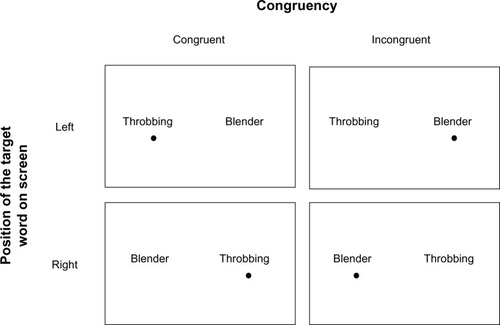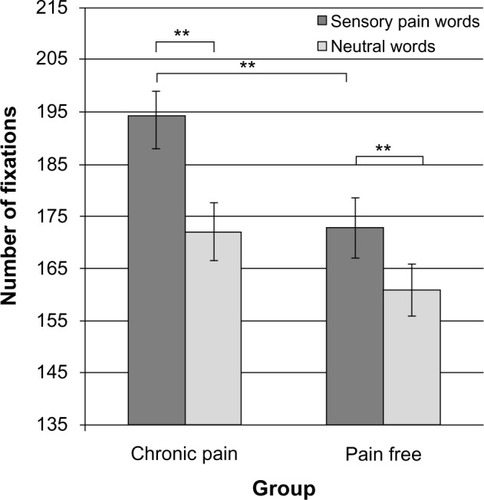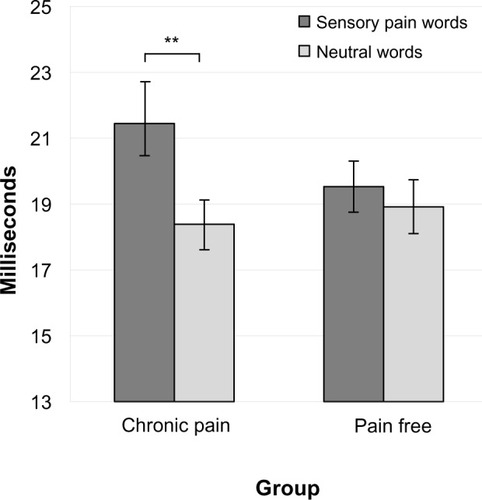Figures & data
Table 1 Word pairs
Figure 1 Visual depiction of counter-balanced trials of words presented during the dot-probe task.

Table 2 Hypothesis 1: reaction time index scores (in milliseconds) for the chronic pain group (n=51) and the pain-free group (n=62)
Figure 2 Frequency of fixations for each group.

Table 3 Hypotheses 2–4: frequency and duration of eye-tracking dependent variables for the chronic pain group (n=51) and the pain-free group (n=62)
Figure 3 Average visit duration for each group.

Figure 4 Late-phase total fixation duration for each group.

Table 4 Hypothesis 5: comparisons between the chronic pain group (n=51) and pain-free group (n=62) according to questionnaire data
